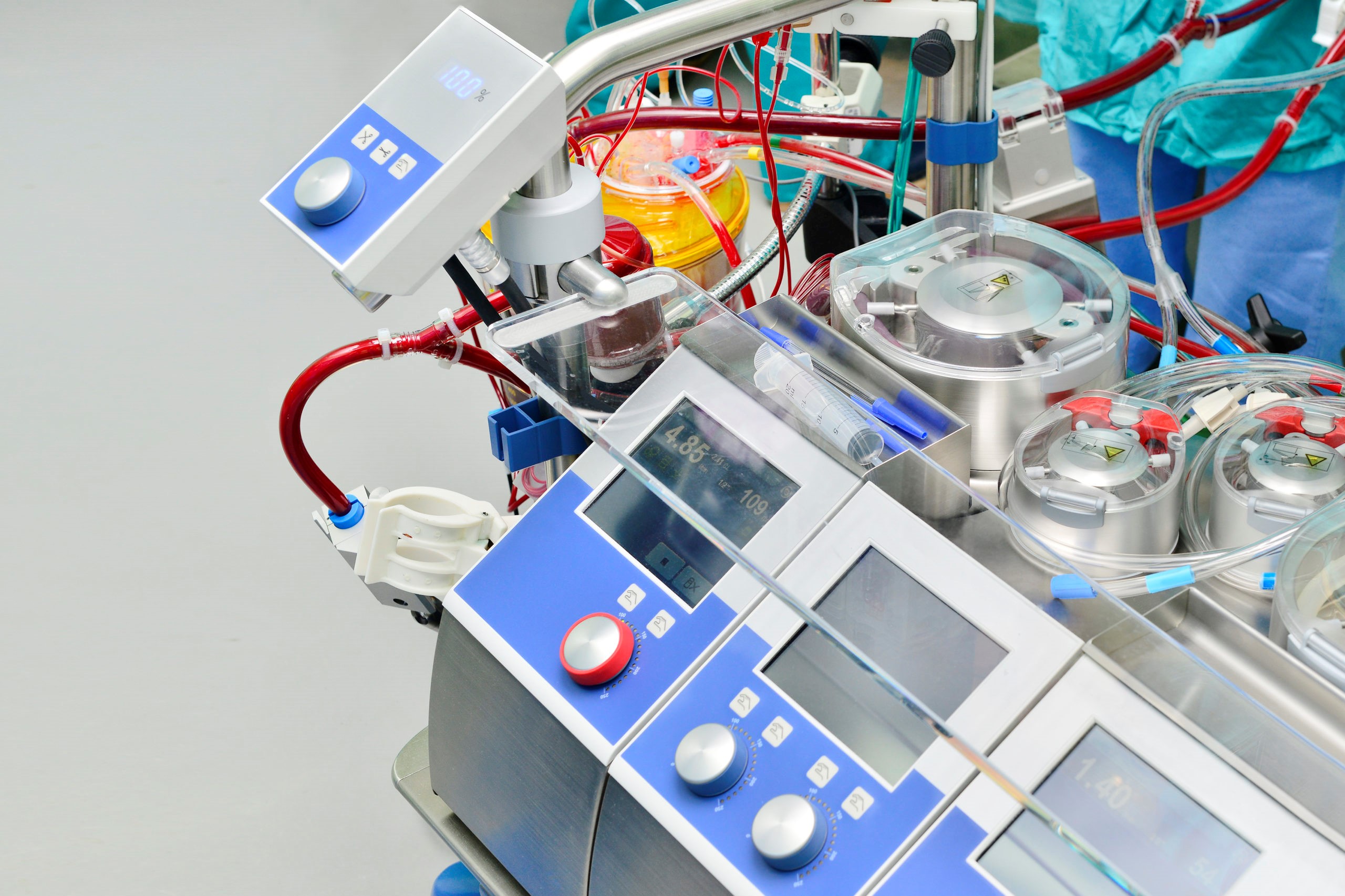
Heart-lung machine: how extracorporeal circulation works
Heart-lung machine, during open-heart surgery, acts in place of the heart, exchanging blood and oxygen
Why and when is the heart-lung machine necessary?
The heart and lungs work together to provide the body’s cells with the oxygen they need.
During circulation, the heart pumps low-oxygen blood to the lungs and receives oxygen-rich blood from the lungs to redistribute it throughout the body.
Sometimes, the heart can be damaged due to heart disease or trauma.
In these cases, open-heart surgery, in which the chest is opened to operate on the heart, may be needed to repair the damage.
During some open-heart surgeries, it may be necessary to stop the heart to repair the heart muscle, valves or other organs.
A heart-lung machine allows the surgeon to stop the heart while maintaining blood circulation
The machine consists of a pump, which functions like the heart, and an oxygenator, which performs the functions of the lung.
During a heart-lung bypass, low-oxygenated blood is first diverted from the upper cavities of the heart and directed to the reservoir of the heart-lung machine.
The blood is then transferred to the oxygenator which enriches the blood with oxygen.
Finally, a pump returns the blood to the patient’s arterial system, and the body can resume blood circulation.
Once the damage has been repaired, the heart can start beating again and the heart-lung machine is removed.
Read Also:
Emergency Live Even More…Live: Download The New Free App Of Your Newspaper For IOS And Android
Nasal Cannula For Pre-Oxygenation & Apneic Oxygenation: How To Do It
ECMO In Patients With Severe COVID-19: Harvard Medical School On Extracorporeal Membrane Oxygenation
Policlinico Umberto I: Covid-19 Survivor Gives Birth In Extracorporeal Circulation (ECMO)


